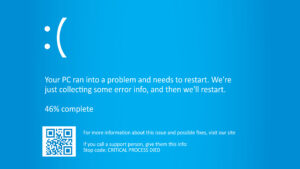The comparison between Google Workspace and Microsoft 365 has gained prominence. As Google Workspace emerges as a robust alternative to Microsoft Office, recent pricing changes have brought forth the need to dissect the pros and cons of each suite. This exploration aims to assist businesses in determining the most suitable solution for their unique needs.
Once the undisputed ruler of the business world, Microsoft Office faced a formidable challenge in 2006 when Google introduced Google Docs & Spreadsheets. This collaborative online word processing and spreadsheet tool evolved into the Google Apps suite, later rebranded as G Suite and now as Google Workspace. While it didn’t immediately revolutionise the business landscape, Google Workspace has progressively garnered popularity, boasting 6 million paying customers as of March 2020. Concurrently, Microsoft shifted its focus from traditional licensed Office software to Microsoft 365, a subscription-based version treated as a service, with frequent updates and new features.
Choosing an Office Suite: Today, selecting an office suite is a nuanced decision. Both Google Workspace and Microsoft 365 operate on a subscription-based model, catering to businesses with varying needs. Google Workspace is web-based but can also function offline, while Microsoft 365 is based on installed desktop software, supplemented by web-based applications. Both suites are compatible with a range of devices and offer core applications like word processing, spreadsheets, presentations, email, calendar, contacts, video conferencing, messaging, and note-taking. However, the applications and management tools differ, making the choice challenging for businesses.
Google Workspace vs. Microsoft 365
To simplify the decision-making process, this exploration provides a comprehensive analysis of various aspects, including application-by-application comparison, collaboration capabilities, app integration, pricing, support, and more. The focus remains on how these suites cater to the specific needs of businesses rather than individual users.
Pricing Structure
Recognising the importance of pricing in decision-making, while individuals can access some online apps for free, businesses should explore paid subscriptions for essential security and management features.
Google Workspace Pricing Options: Google Workspace offers four commercial versions—Business Starter, Business Standard, Business Plus, and Enterprise—each with unique features and pricing. The plans start from around £5 per user per month, with additional options like Enterprise requiring direct contact with Google for detailed pricing.
Microsoft 365 Pricing Options: Microsoft 365 business subscriptions cater to diverse needs, starting from around £4.90 per user per month. With various plans available for small and larger businesses, you can customise plans by choosing à la carte options.
Google Workspace vs. Microsoft 365: App by app
Every business has different needs, and yours may place greater value on certain apps than others. For some companies, word processing and email might be the most important apps in an office suite, while others might need a powerful spreadsheet program above everything else.
To help, we’ve compared the major office apps in Google Workspace and Microsoft 365 so you can zero in on the apps that are most important to your business and let their strengths and weaknesses guide your overall decision. We’ve included only the highlights below; if you want more details about each app, we’ve linked to Computerworld articles that offer in-depth comparisons.
Word processing: Google Docs vs. Microsoft Word
Deciding on whether your business would be better off with Google Docs or Microsoft Word is fairly straightforward. Which is more important to your users: easy-to-use collaboration or the greatest range of document creation and editing features? For collaboration, Google Docs is better. For as fully featured a word processor as you’ll find anywhere, you’ll want Word.
Word has superior features, I don’t mean a bunch of tools that your business may never use. I mean great capabilities that make your workflow easier and more productive.
For example, if you’re creating a report, brochure, resume, or almost any other kind of document, Word offers an excellent set of pre-built templates so you can get writing fast, knowing that your document will have a solid, useful design. Word has 300 different business templates alone, while Google Docs only has 55 total templates of all kinds, including personal, business, and educational ones. (Microsoft claims Word has thousands of templates, but we couldn’t count them all.) Word also offers more chart types and styles for embedding into document.
Google Docs outshines Word when it comes to live collaboration. Collaborating is seamless and has been built into the app from the ground up, while in Word it’s more difficult to use, not as comprehensive, and feels tacked-on rather than an integral part of the program.
For non-live collaboration — editing and marking up documents for review by others — Word has always been the gold standard, but Google Docs has come a long way and now is nearly as good as Word. Word’s editing tools have slightly finer-grained controls, but apart from that, they’re about even.
Spreadsheets: Google Sheets vs. Microsoft Excel
Do users in your company mostly work alone on spreadsheets, or do they frequently collaborate with others? The answer to that will determine whether Excel or Google Sheets is better for your business.
For those who primarily work by themselves, Excel is the clear winner. As with Word, its wide selection of templates offers an embarrassment of riches. For example, there are more than 80 templates just for different types of budgets. Whether it’s a business budget or a special-purpose budget, such as for a marketing event, you’ll likely find one that fits your needs and that can be easily edited. By contrast, Google Sheets has only three different budget templates.
Excel also offers far more chart types than Google Sheets — 19 in all — including popular ones such as column, line, pie, bar, and area; more complex ones such as radar, surface, and histogram; and some that are known mainly to data professionals, like box & whisker. And many chart types have multiple subtypes — for example, among the bar charts you’ll find clustered bar, stacked bar, and so on, and each of those has two variations. Google Sheets has only seven main types of charts and a handful of individual charts that can’t be categorised. It’s also simpler to create charts with Excel than it is in Google Sheets.
Google Sheets far outpaces Excel in real-time collaboration, though. As with Docs, collaboration is baked directly into Sheets. Not only does it have more powerful tools, but they’re naturally integrated and easy to access. The same holds true for editing and commenting on spreadsheets.
Presentations: Google Slides vs. Microsoft PowerPoint
As with word processing and spreadsheet apps, whether Google Slides or PowerPoint is best for your business comes down to a single point: Do you prize collaboration or powerful features in a presentation program? If collaboration is king in your company, Google Slides is better. For every other reason, PowerPoint is.
PowerPoint’s QuickStarter feature makes quick work of starting a presentation. Choose the topic of your presentation, and QuickStarter walks you through creating an outline, starter slides, templates, and themes. Although Google Slides does offer an Explore tool that suggests layouts as well as images and other content related to your slideshow topic, it is in no way equivalent to QuickStarter.
Similarly, with PowerPoint, it’s easier to add graphics, transitions, animations, and multimedia. It has more chart and table types as well. And it offers sophisticated options when it comes to giving the presentation itself, with innovative capabilities such as Rehearse Timings, which times how long you take on each individual slide as you rehearse a presentation. That way, you won’t get bogged down on any individual slide, and you can practice giving each slide it’s just due. Google Slides has nothing like it.
Google Slides rules when it comes to collaboration, with far outstrips the kludgy and awkward capabilities built into PowerPoint. And because Slides offers fewer capabilities than Excel, it’s slightly easier to create slides in it, because it doesn’t pack as many features into the interface.
You might like to read. . .

Cheap IT Services, Why Cutting Corners Could Cost You More
It’s July already, past the halfway point of the year! Whether you’re revisiting your 2025 IT strategy or simply trying to stay ahead of the

How to prepare for Windows 10 end of support by moving to Windows 11 today
As we approach the end of support for Windows 10 on Oct. 14, 20251, we want to ensure you are well-prepared for the transition to Windows

ACUTEC adopts the leading PSA software HALO for enhanced holistic IT services management.
ACUTEC, a leading UK-based IT managed services provider, is proud to announce its adoption of Halo Professional Services Automation as its new platform for service

This is not just a Cyber Attack, This a SIM swap Cyber Attack
M&S cyberattack used a lesser-known but dangerous technique, here’s what your business needs to know Marks & Spencer has been hit by a cyberattack exploiting

Windows 10 is Ending Here’s What Smart Businesses Are Doing Next
Microsoft has confirmed that support for Windows 10 will end on 14 October 2025. After this date, devices running Windows 10 will no longer receive

How Microsoft Power BI Works with Microsoft 365
At ACUTEC, we’re passionate about helping organisations get the most from their Microsoft investments. One of the most powerful tools for turning data into actionable

